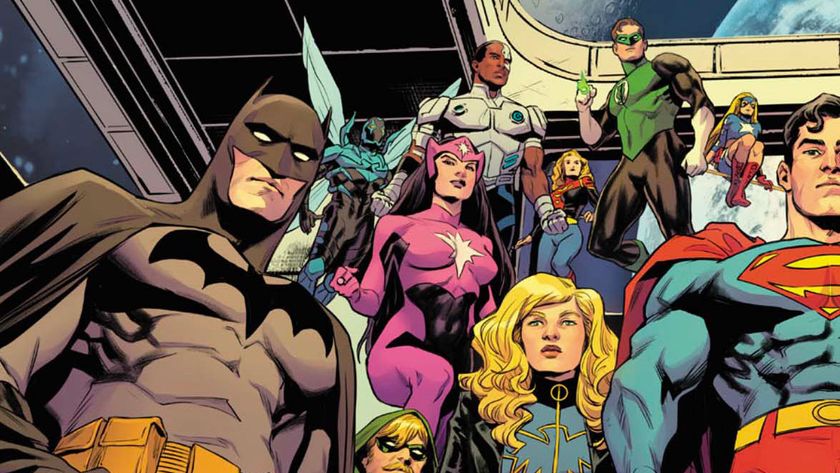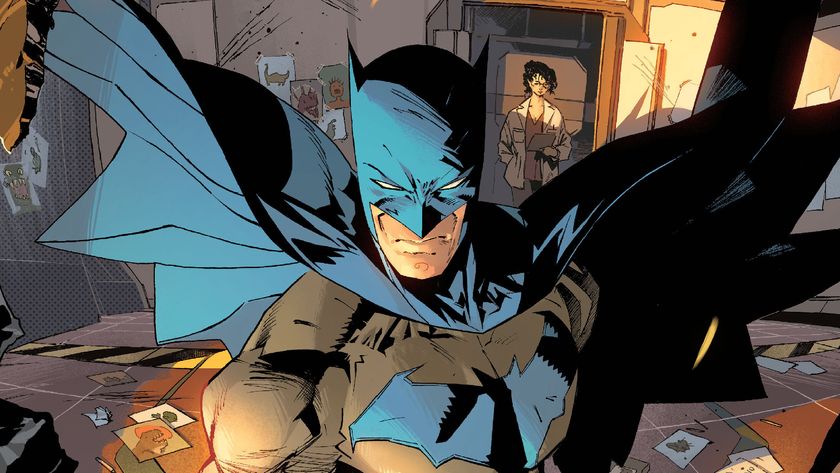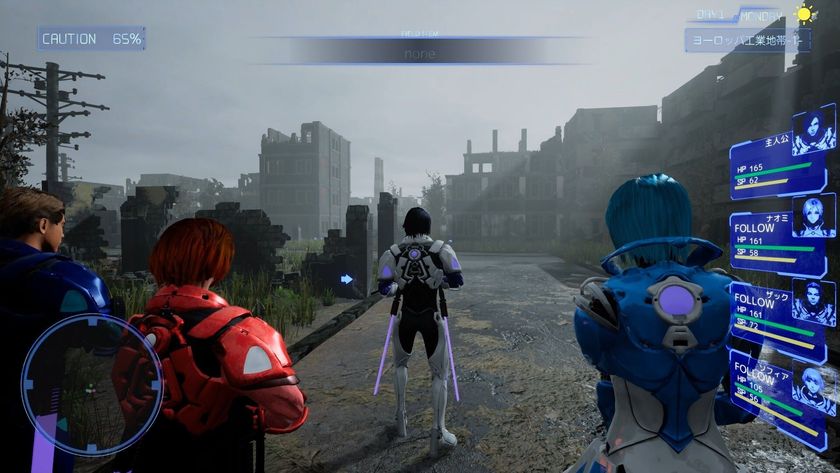The best Green Arrow comics of all time
Oliver Queen is the king of comics archers (sorry, Hawkeye), and here are the best Green Arrow comics of all time!
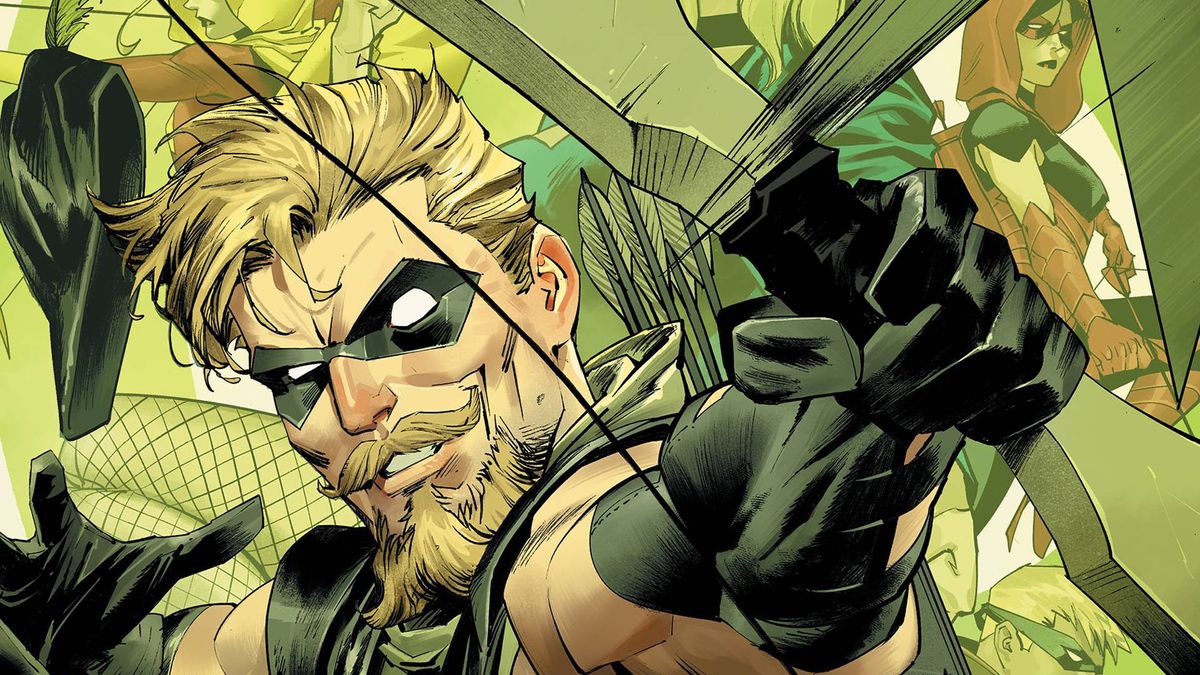
For 80 years, Green Arrow has been a staple of the DC universe. Created in 1941 by Mort Weisinger and George Papp, Oliver Queen made his debut in the same issue as Aquaman. Originally an urban amalgam of Robin Hood and the popular westerns of the day, the Batman and Robin model of the time was transplanted to Green Arrow and Speedy.... and the rest is history.
Or so you would think.
The Green Arrow of 2023 bears little resemblance to his 1941 counterpart. He was given a new origin and sent into space by Jack Kirby in the '50s. He was hard-traveling across America in the late '60s and early '70s under Denny O'Neil and Neal Adams. Mike Grell made Ollie an urban hunter in the '80s. He was killed off and replaced in the '90s, only to be resurrected by Kevin Smith in the early '00s. He's a moving target.
Some classics are inevitably left off in crafting a list like these best Green Arrow comics of all time. Elliot S. Maggin and Neal Adams' Green Lantern #87 backup story 'What Can one Man Do?' sees the character accept his role as man, legend, and potential mayoral candidate. The quirky 1983 Green Arrow limited series from Mike W. Barr and Trevor von Eeden is an art-led gem with the distinction of being Green Arrow's first headlining title. Writers Kelley Puckett and Chuck Dixon gave us an alternate Connor Hawke, who would carry the Green Arrow mantle alone for over seven years.
From blank slate to the lynchpin of a television universe, Green Arrow is the most human of DC's pantheon of characters. The best Green Arrow comics of all time reflect the best of us, but also our failings and frailties.
10. The Outsider's War
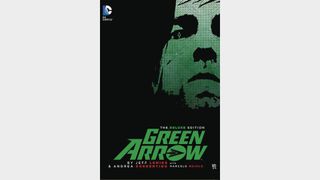
The 'New 52' era of Green Arrow had some issues, to put it mildly. Yet one of the shining beacons was unquestionably Jeff Lemire and Andrea Sorrentino's run (as collected in Green Arrow By Jeff Lemire & Andrea Sorrentino Deluxe Edition). They stripped the character back to his barest elements, literally detonating Oliver Queen's past life and leaving him penniless and on the run.
In rebuilding Ollie's world, Lemire expanded the official origin story for the first time in decades, crafting something he has called a "Green Arrow-centric mythology." After recovering from his encounter with classic villain Count Vertigo, Green Arrow returns to the island that made him. There he encounters the hitherto unmentioned Arrow Clan, one of several weapons clans all connected to the ancient Outsiders. Like the best remixes of an origin story, Lemire introduces elements that expand our understanding of the character without undermining it. Plus, he also brings Shado, the long-thought-dead Robert Queen, martial artist Richard Dragon, and Ollie's half-sister Emiko into the contemporary DCU.
Comic deals, prizes and latest news
Get the best comic news, insights, opinions, analysis and more!
If Lemire's soft reboot is imaginative, then Sorrentino's artwork is nothing less than mindblowing. One of the more bold and experimental approaches to mainstream comics, Sorrentino uses inserts, overlapping panels, and bold monochromatic color (and often the complete absence of it) to ensure that every page strikes at the reader and remains lodged in their brains.
9. Justice League: Rise and Fall
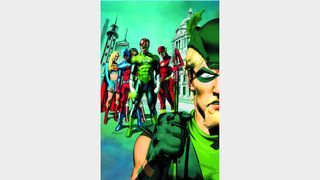
Prior to the demise of the pre-Flashpoint universe, there was one last great Green Arrow story to tell: Justice League: Rise and Fall. Following the events of James Robinson's Cry for Justice, Roy Harper/Arsenal's daughter is dead. Roy has lost his arm and is in a coma. Star City lies in ruins. The villain Prometheus is to blame, and Green Arrow breaks the line that no hero should ever cross by killing the bad guy in cold blood.
Writer J.T. Krul, together with primary artists Federico Dallocchio and Geraldo Borges, deliver one of the more divisive stories in Ollie's recent history. Green Arrow has been at the center of multiple Justice League stories, but rarely has his humanity been put so starkly on trial. Ollie had turned his back on the League in the past when they didn't gel with his politics, but here they do the same when his desire for revenge was put ahead of the titular notion of justice.
Ollie is ultimately confronted by the League, has his engagement ring returned to him by Dinah, and turns himself in for his crimes. It led to the dawn of a new era for Green Arrow, but it continued to prove that his lowest points also made for the best stories.
8. New Blood
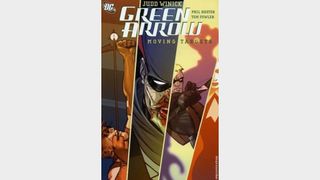
As one of the longest-running creators on Green Arrow since Mike Grell, writer Judd Winick carved an indelible mark on the character. Returning to the spirit of the ‘relevant comics' made famous by Denny O'Neil and Neal Adams, in 'New Blood' (collected in Green Arrow: Moving Targets) Winick uses the framework of a cracking action story to explore social issues and continue the work he began in the earliest days of his writing.
One of the most highly publicized aspects of his five-year run was the character of Mia Dearden, introduced by Kevin Smith and destined to be the new Speedy. During this arc, she tests positive for HIV, coming out to her adopted family and classmates and adopting the dual role of hero and educator. In a poignant moment, Winick puts the words of his late friend and activist Pedro Zamora directly into one of Mia's speeches.
Under the skilled hands of artists Phil Hester and Ande Parks, Mia is transmogrified off the page to become something close to real: a fictional character who educates the reader while picking up the twin legacies of Speedy and Zamora. As Winick said at the time, "I figured one hero story should follow another."
7. Identity Crisis
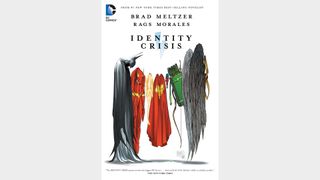
The term ‘crisis' has always had a particular meaning in DC, usually referring to the collapse of one continuity and the rise of another in its place. While the stakes were far more personal in the controversial seven-issue limited series Identity Crisis by Brad Meltzer and artist Rags Morales, it still managed to pull the rug out from under everything we thought we knew about DC's heroes.
Following the suspicious death of Sue Dibny, the wife of Elongated Man, the superhero community investigates. It emerges that it is connected to the time the villain Doctor Light once raped Sue, and the League decided to wipe his memory. They didn't stop there, erasing the memory of other villains and heroes alike when the need arose. Heroes align on opposite sides of the fence, with Green Arrow curiously standing by the actions.
The rift this causes in the team led to multiple ripple events, but it also confirmed the weight of Green Arrow's role as the conscience and moral memory of the Justice League. A post-9/11 story that has parallels with Marvel's Civil War, it's as much a reaction to the 2001 Patriot Act as it is an analysis of sacrificing personal freedoms for the so-called greater good.
6. Year One
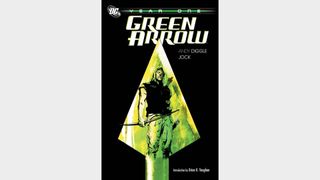
By the time writer Andy Diggle and artist Jock took on the official Green Arrow origin story in 2007 with Green Arrow: Year One, the tale of the desert island had been told and retold numerous times by the likes of Jack Kirby, Chuck Dixon, and Mike Grell. Yet in their hands, it was fresh and essential storytelling.
Retconning a number of new elements - Ollie's costume and name were functional necessities, for example - Diggle's script still manages to maintain the core of Green Arrow's origin. Here playboy Oliver Queen has washed ashore on an island and is forced to survive while contending with a drug cartel operating out of the otherwise peaceful paradise. It's a complete character arc without having to rely on prior knowledge but is still vastly enhanced by it.
There are nods to Mike Grell's The Longbow Hunters, and a brief dalliance with heroin that puts his infamous reaction to Speedy's addiction in a new light. Yet this is undoubtedly an Andy Diggle crime story, enriched by Jock's deep shadows and minimalist approach, one that recalls Frank Miller and David Mazzucchelli's work on a Batman origin of the same name.
While this new origin story would only canonically last until Flashpoint four years later, many elements from this revision made their way into the Arrow TV series, serving as a model for the flashback sequences that ultimately locked that show into a stylistic motif. Drug ring leader China White also served as one of the primary antagonists in the show's first few seasons.
5. Night Olympics
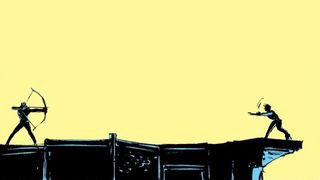
In 1985, writer Alan Moore and artist Klaus Janson took on the Emerald Archer for a brief run after editor Len Wein found himself in a "bit of a jam." He asked the high-demand writer and Daredevil artist to come on board for backup stories in Detective Comics #549 and #550 to keep Green Arrow visible until he could be launched into his own spin-off series.
Unlike many of his contemporaries, Green Arrow didn't have his own solo series for the first 46 years of his existence. As such, some of his best early stories appear as backup material in other hero's books. Before going solo, his last run of backup stories was in Detective Comics, and this might be one of the more memorable from this transitional era.
Filled with Moore's street-level poetry, it's a tense two-parter that unquestionably takes a Reagan Era view of city crime. A few years before Mike Grell would transform Green Arrow into an urban hunter, Moore provides a running ‘sports' commentary to a criminal being chased across Janson's Manhattan-inspired rooftops. The artist says Moore provided him with an "excellent tutorial in pacing and scene-setting," one that culminates in a series of action close-ups that wouldn't look out of place in a Sergio Leone film.
4. Green Arrow by Jack Kirby
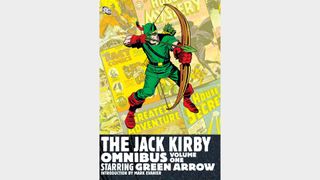
It's an often-forgotten fact that Oliver Queen's ordeal on an island was not his first origin story. Before Jack Kirby's brief but historic 11-issue run - first published in Adventure Comics #250 - #256 and World's Finest Comics #96 - #99 throughout 1958 and 1959 (collected in The Jack Kirby Omnibus Vol. 1: Starring Green Arrow) - Ollie's origin was the less familiar tale of an archeologist in search of Native American artifacts in the Lost Mesa.
Despite never really caring for the character, Jack Kirby and Ed Herron irrevocably left their mark on him by finally providing the character with his definitive origin story almost two decades after Green Arrow's introduction. In a handful of pages, we see the story that is now comic book lore: Oliver Queen has washed ashore on a desert island and is forced to camouflage himself while hunting small game and pirates. The story has been expanded and adapted on page and screen dozens of times, but rarely has the simple elegance of Kirby's storytelling been bettered.
While Kirby was never allowed to fully cut loose on the character, often confined by the mere six or seven pages these backup stories allowed, his brief tenure vastly expanded the hero's antics beyond the confines of Star City. Indeed, there's no other era of Green Arrow where we see him clinging onto the shoulder of a giant doppelgänger named Xeen Arrow while fighting an interdimensional foe. It was the best kind of insanity and an era that finally launched Oliver Queen into the Silver Age of DC.
3. Quiver
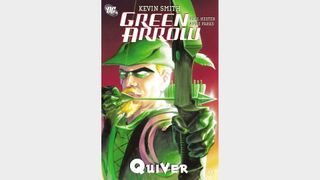
Having already restored Daredevil to A-List status over at Marvel, the Distinguished Competition figured that Smith could do the same for the absentee Oliver Queen. By 2001, Ollie had been dead for almost seven years, a veritable lifetime in comic book terms.
With Green Arrow: Quiver, Smith reintroduces Oliver Queen as he was in his heyday of the '70s, returning to Star City with no apparent memory of his subsequent life or death. It soon emerges that his body is a ‘hollow' that's been separated from his soul, and Ollie isn't the only soul seeking to inhabit his empty vessel. In 10 issues, Smith takes us through a dazzling history lesson of the character, an occasionally indulgent bit of fandom, but a never less than genuine emotional roller coaster that touches on recurring themes of fatherhood, faith, and accepting personal responsibility.
This also marked the start of the character run for artists Phil Hester and Ande Parks, one that would continue through Smith's follow-up arc (introducing the villain Onomatopoeia), Brad Meltzer's brief run, and much of Judd Winick's historic stand on the character. Their striking character model follows Neal Adams in giving Ollie a classic look that has stood the test of time. This may not have been the first Green Arrow story, but it will always be remembered as the one that restored the character to his rightful place as a headliner in the DC universe.
2. Hard-Traveling Heroes
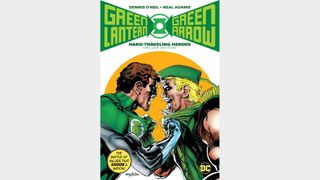
If you were to divide Green Arrow's early career into only two parts, then there's life before and after Denny O'Neil and Neal Adams. Adams gave readers a visual update of the character in the pages of Brave and the Bold, adding his now-famous beard and costume, while O'Neil was steadily making Oliver Queen a more fiercely left-leaning character in Justice League.
This was fertile ground for a confrontation with space cop Green Lantern, used by O'Neil and Adams as a representation of the conservative establishment in the collected Green Lantern/Green Arrow: Hard-Traveling Heroes Deluxe Edition. Echoing the political movements and protests that ripped across America in the contemporary '60s and '70s, Ollie's unwavering belief in his own moral certainty was the voice of a generation. Setting out in a pick-up truck to 'find' America, the series covers race, religion, the environment, and Charles Manson-style cults. In one of the more infamous moments of the series, heroin addiction is addressed when Ollie discovers that his ward Roy Harper/Speedy is a "junkie."
O'Neil's New Journalism traditions and 'realism' are matched spectacularly by Adams' iconic character designs. The hyper-realistic muscles of his leads, and the heavily detailed and photorealistic faces of average citizens are infused with a mixed-media approach Adams learned in advertising. It all coalesces to ensure that even if the cultural references may date, the spirit and style of this comic will remain forever fresh.
1. The Longbow Hunters
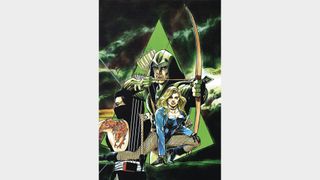
In the wake of Crisis on Infinite Earths, Oliver Queen was given a fresh start and a prestige format limited series. Under the stewardship of writer and artist Mike Grell, along with painted finishes from Julia Lacquement and meticulously detailed backgrounds by assistant Lurene Haines, Green Arrow shifts from spandex-clad Robin Hood superhero to a gritty and hooded urban hunter with Green Arrow: The Longbow Hunters.
Opening on the mean streets of the '80s, Grell's prestige format limited series establishes a world of serial killers, CIA agents, and international cartels. Inspired by the Iran-Contra affair, this was a world deliberately kept free of superheroes, where the moral compass was perpetually stuck on grey. It was one where Green Arrow, now in his 40s, aged in real-time. He and Black Canary lived in domestic bliss, but they also fought, made up, made love, and fell apart.
Speaking of Dinah, one of the more controversial elements of this series is the violent assault and torture of Black Canary, a sight that not only resulted in Oliver killing the perpetrator without hesitation but resulted in the loss of her 'Canary Cry' powers. Despite Grell's best attempts to work through the emotional and psychological fallout of this event in the pages of his ongoing series, it is still often held up as a classic case of ‘fridging' a female heroine for the sake of the male hero's arc.
Even so, this bold change of direction would be followed by an ongoing series that Grell remained on for 80 issues. When he departed, DC would reunite Ollie with his super friends and lighten the tone - at least before killing him off and replacing him with Connor Hawke for a time. Yet the legacy of Grell's series remains strong, finding its way into runs by Jeff Lemire, Benjamin Percy, and other writers. More importantly, Grell created the iconic hooded look that is still used, or at least visually referenced, over 30 years later on page and screen.
Richard is a culture journalist covering comics and film. He's written for Newsarama for a number of years. Based in Australia, Richard is the editor of The Reel Bits, and is writing a novel called Moving Target.
Most Popular






